Medicinal Garden, Royal College of Physicians, London
Wednesday 3 August 2022
The visit to the Medicinal Garden at the Royal College of Physicians in London, postponed from mid-July due to very high temperatures, took place in early August.
Dr Henry Oakeley and Dr Tim Cutler were our guides and filled our heads with lots of facts and interesting ways that plants are used for medicinal purposes. This came alongside sensible advice, that “all plants are poisonous” and ‘it isn’t wise to create your own herbal remedies”.
The garden is set out with plants grouped in geographical areas. It contains 1,300 plants connected with medicinal use or medical figures e.g. Abelia × grandiflora (synonym Linnaea × grandiflora), named after Dr Clarke Abel, who was shipwrecked and attacked by pirates on returning from an abortive ambassadorial mission to meet the Emperor of China, losing all his seed samples. Only around 45 of these plants are still used in medicine today.
It was a fascinating and entertaining tour which was enjoyed by all, as was the buffet lunch provided at a nearby pub before the visit.
Many thanks to Denise Pawlett for organising the day, and to Henry Oakeley and Tim Cutler for informing us in such an engaging way. We are curious to know more.
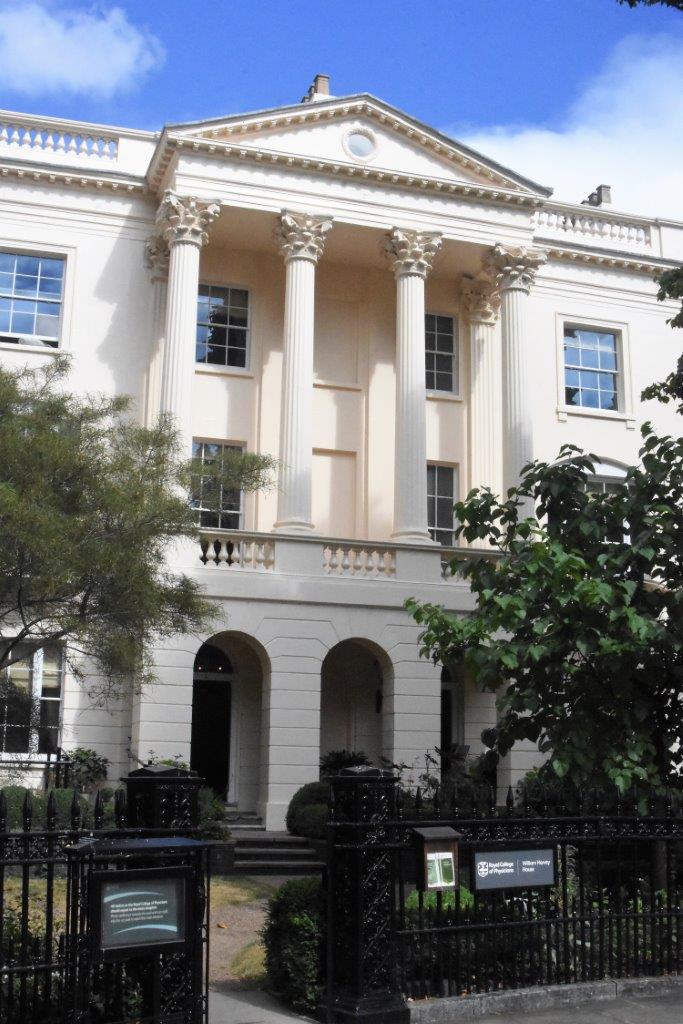
William Harvey House, Royal College of Physicians. The Grade I listed building was designed and built in 1826 by the architect John Nash (1752–1835), who was responsible for much of the layout of Regency London. In 2011 the building was named after the eminent physician and RCP fellow William Harvey (1578–1657), who first explained the circulation of blood through the body and later donated his library and collections to the RCP.
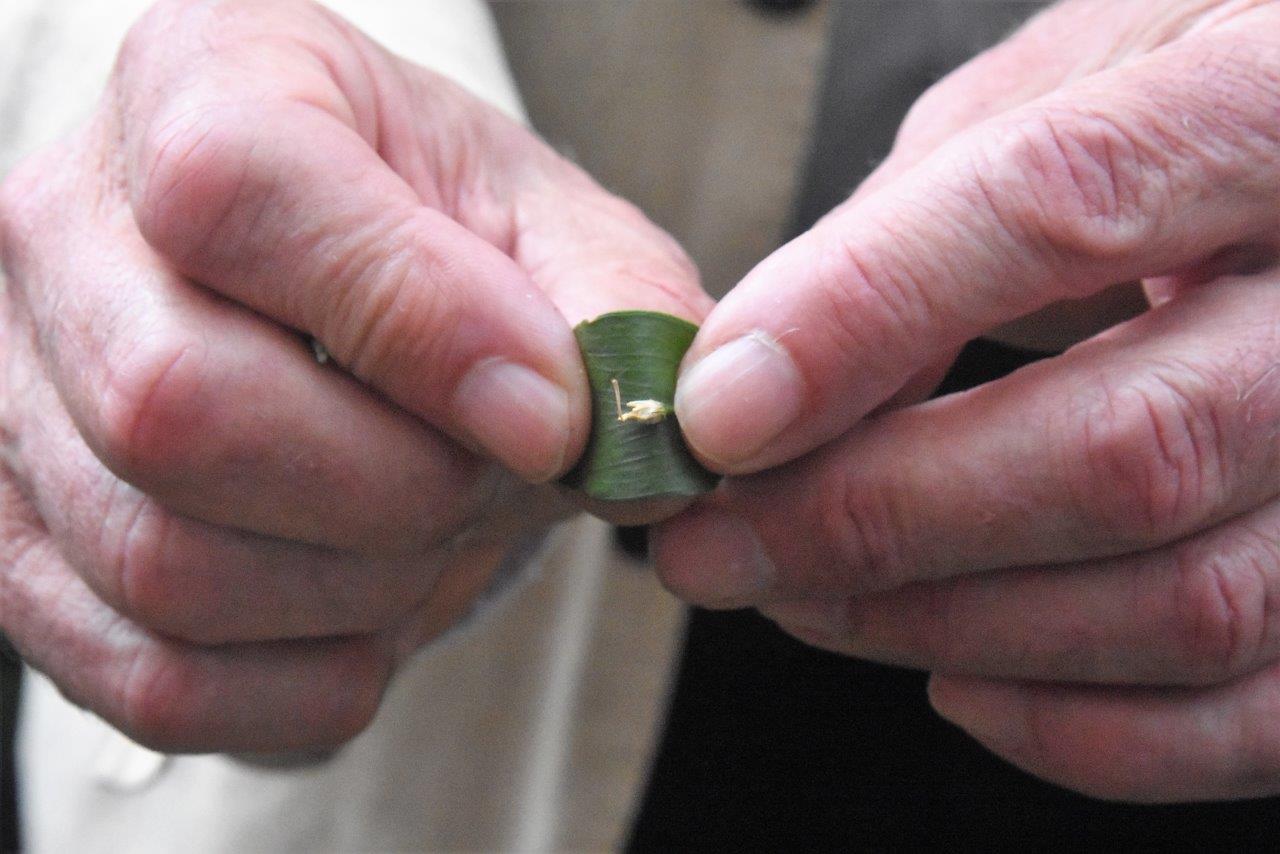
Ruscus or butcher’s broom leaf is shown here with a cladode.
Cladodes (also called cladophylls or phylloclades) are shoot systems in which leaves do not develop; rather, the stems become flattened and assume the photosynthetic functions of the plant. It is an adaptation to reduce water loss, since it contains fewer stomata than a leaf. Butcher’s broom is commonly taken by mouth for symptoms of poor blood circulation, such as pain, leg cramps, leg swelling, varicose veins, and itching, kidney stones, gallstones, hardening of the arteries (atherosclerosis), constipation and many other conditions.
Some people apply butcher’s broom to the skin to reduce haemorrhoids and signs of aging, but there is no good scientific research to support any of these uses.
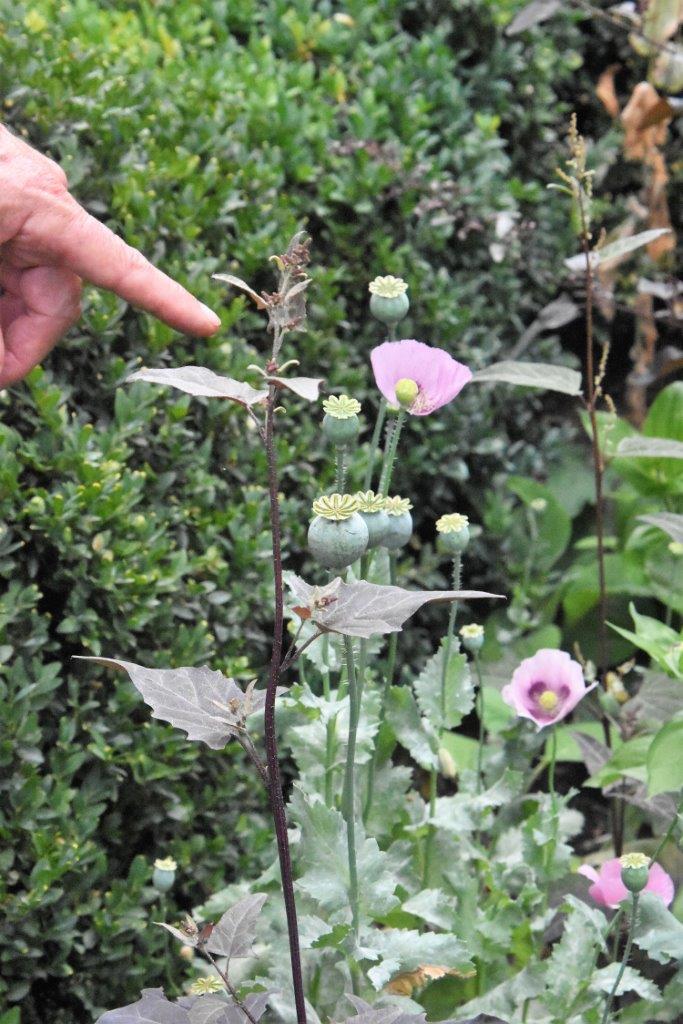
Opium poppies ooze a milky latex sap which contains isoquinoline alkaloids and eating a roll covered in poppy seeds will make your urine test positive for opium for a week!
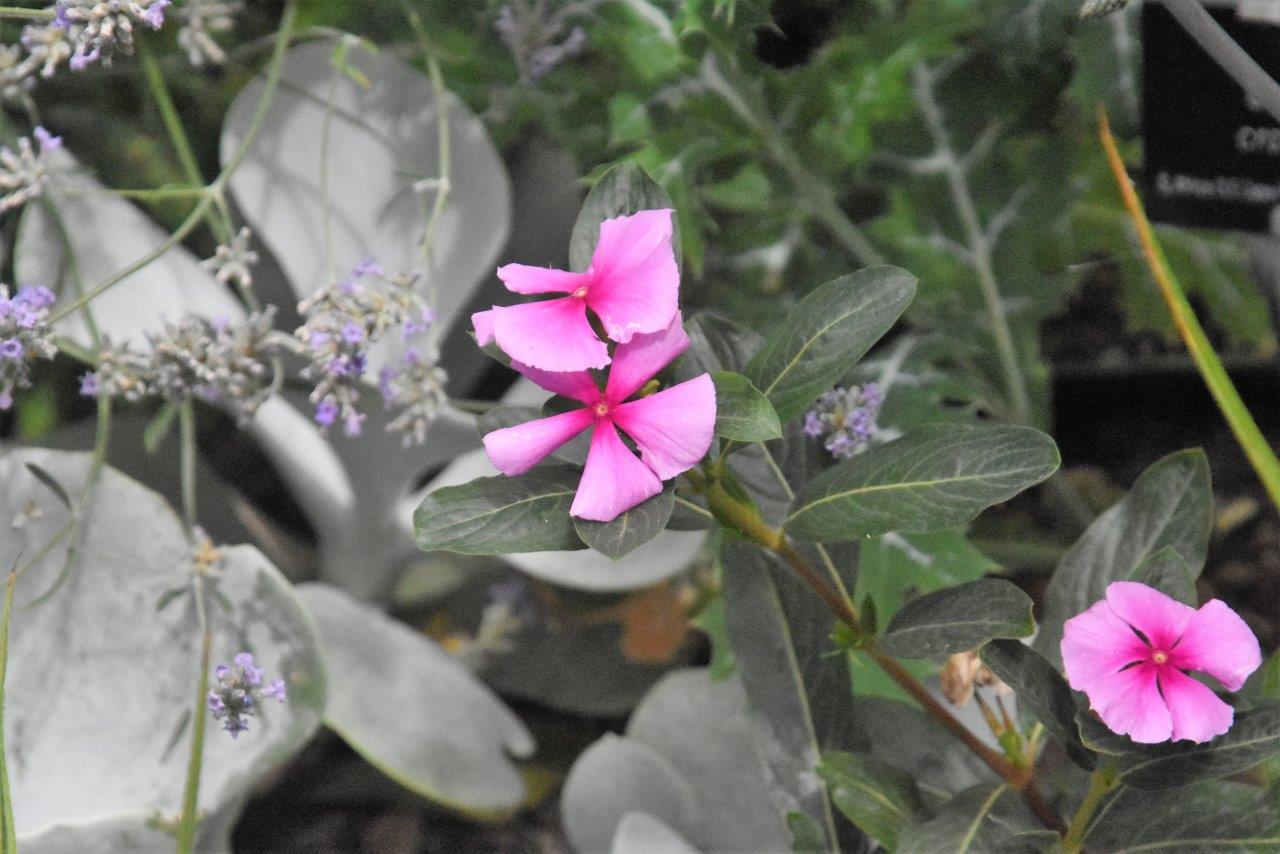
The application of Catharanthus roseus (rose or Madagascar periwinkle) ranges from the prevention of diabetes to treatment of stomach ache as well as reducing childhood leukaemia mortality rates. In the 1970s nearly 100 per cent mortality reduced to 80 per cent survival after use of medication from the plant.
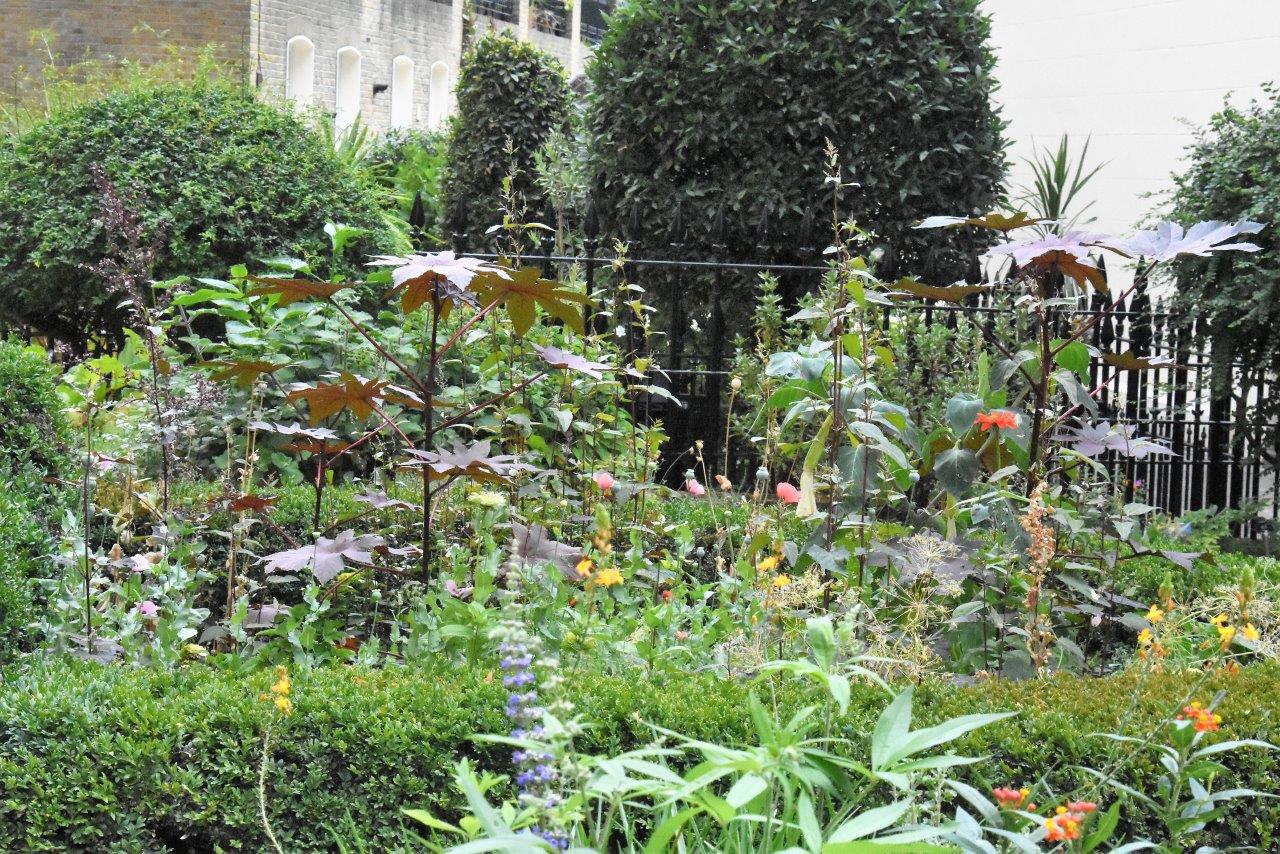
Plants are set out by continent in the beds.
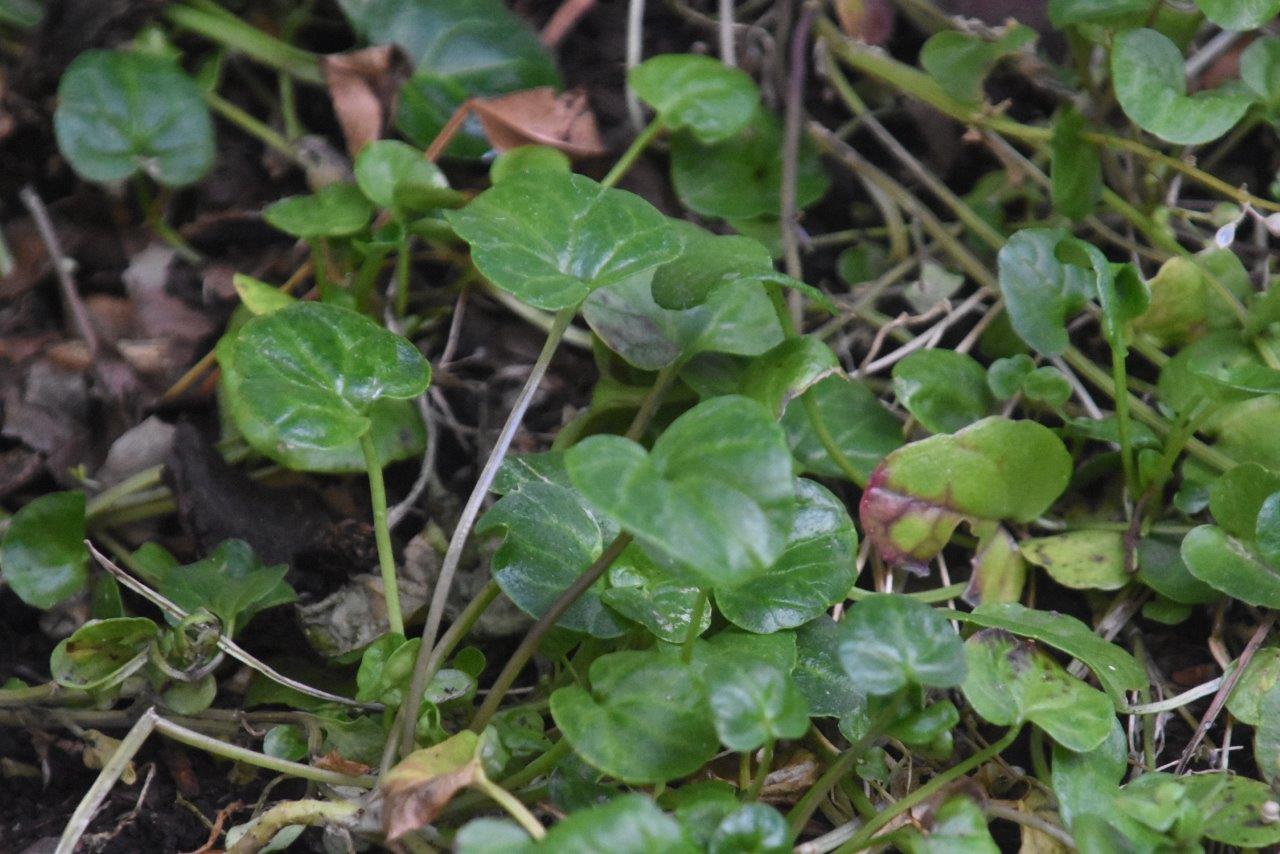
Cochlearia officinalis (common scurvygrass or spoonwort) is a species of flowering plant in the family Brassicaceae. The plant acquired its common name from the observation that it cured scurvy, and it was taken on board ships in dried bundles or distilled extracts.
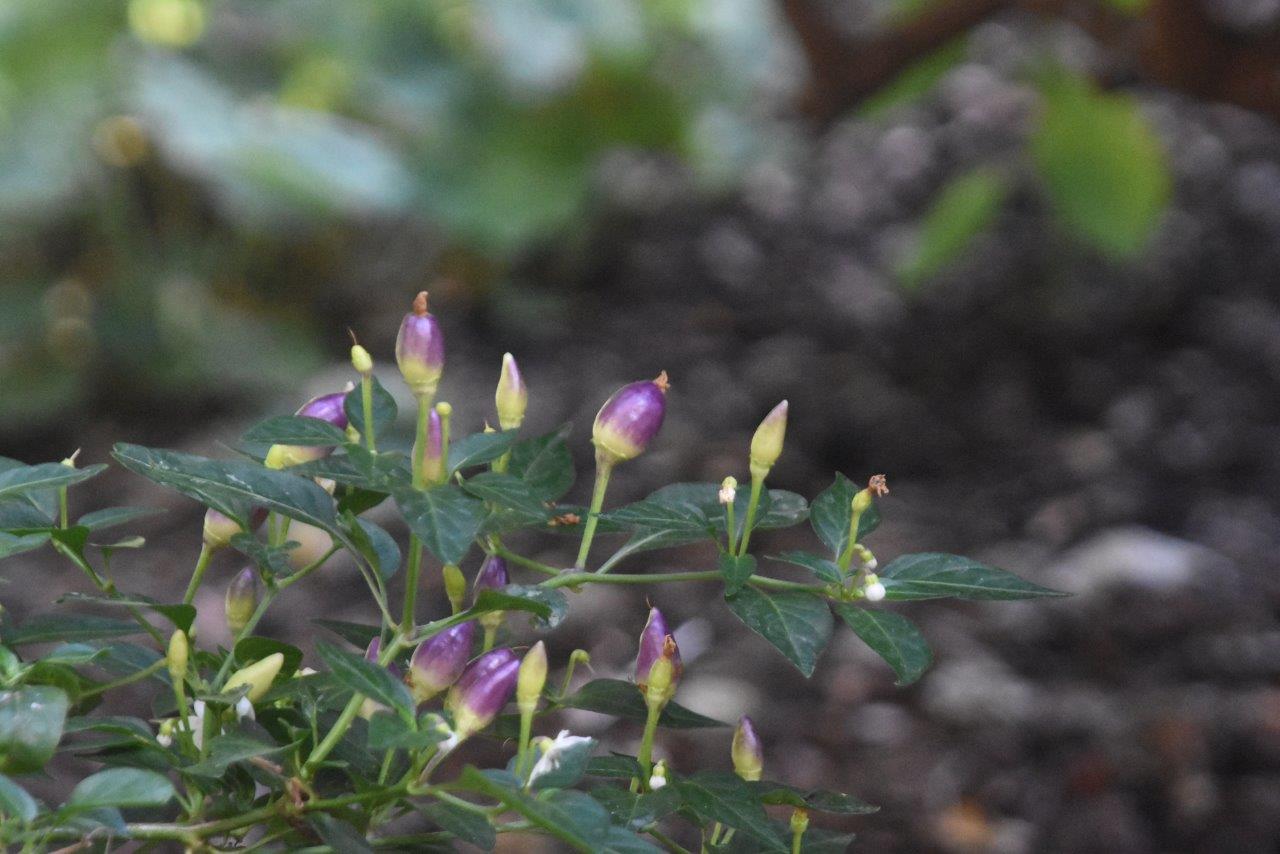
The highest concentration of vitamin C can be found in capsicums
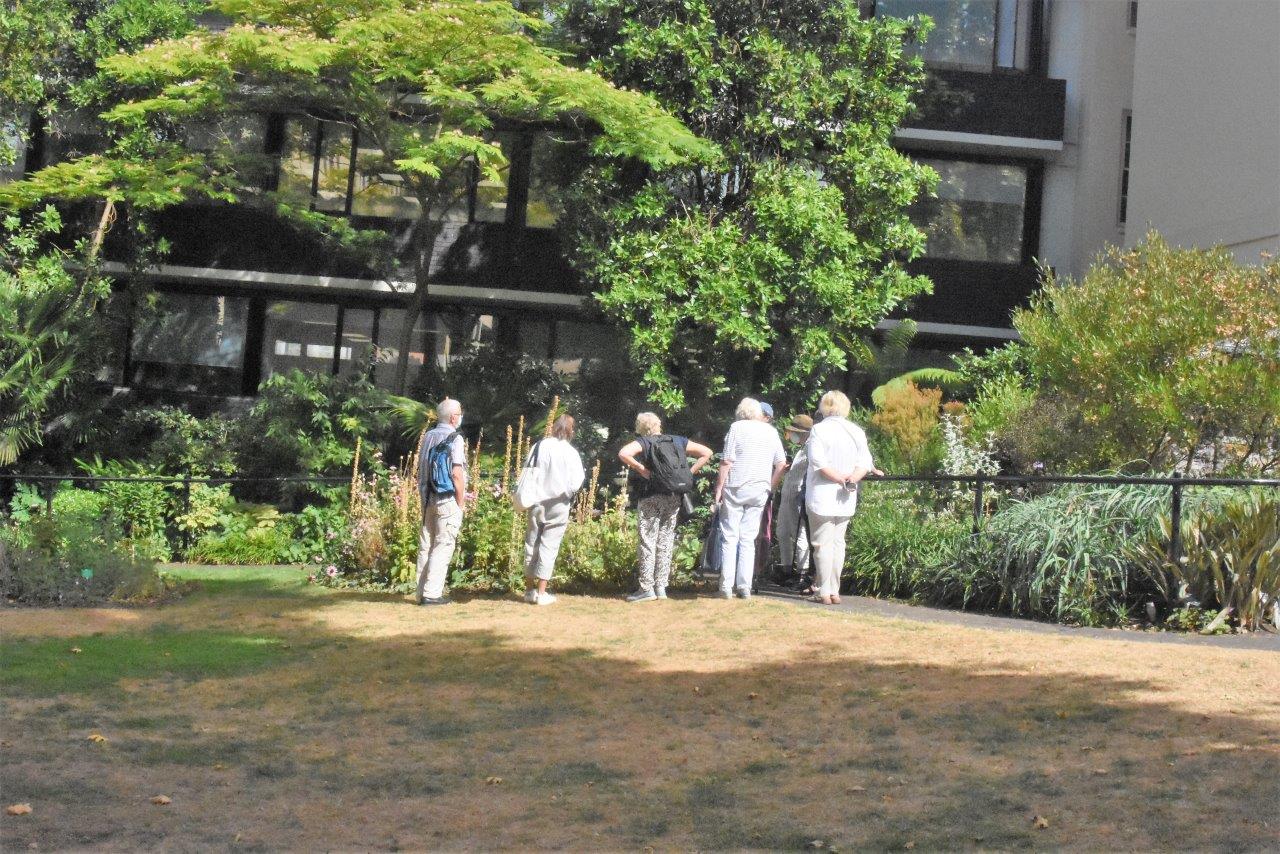
Dr Tim Cutler led one of the MPG groups around the garden
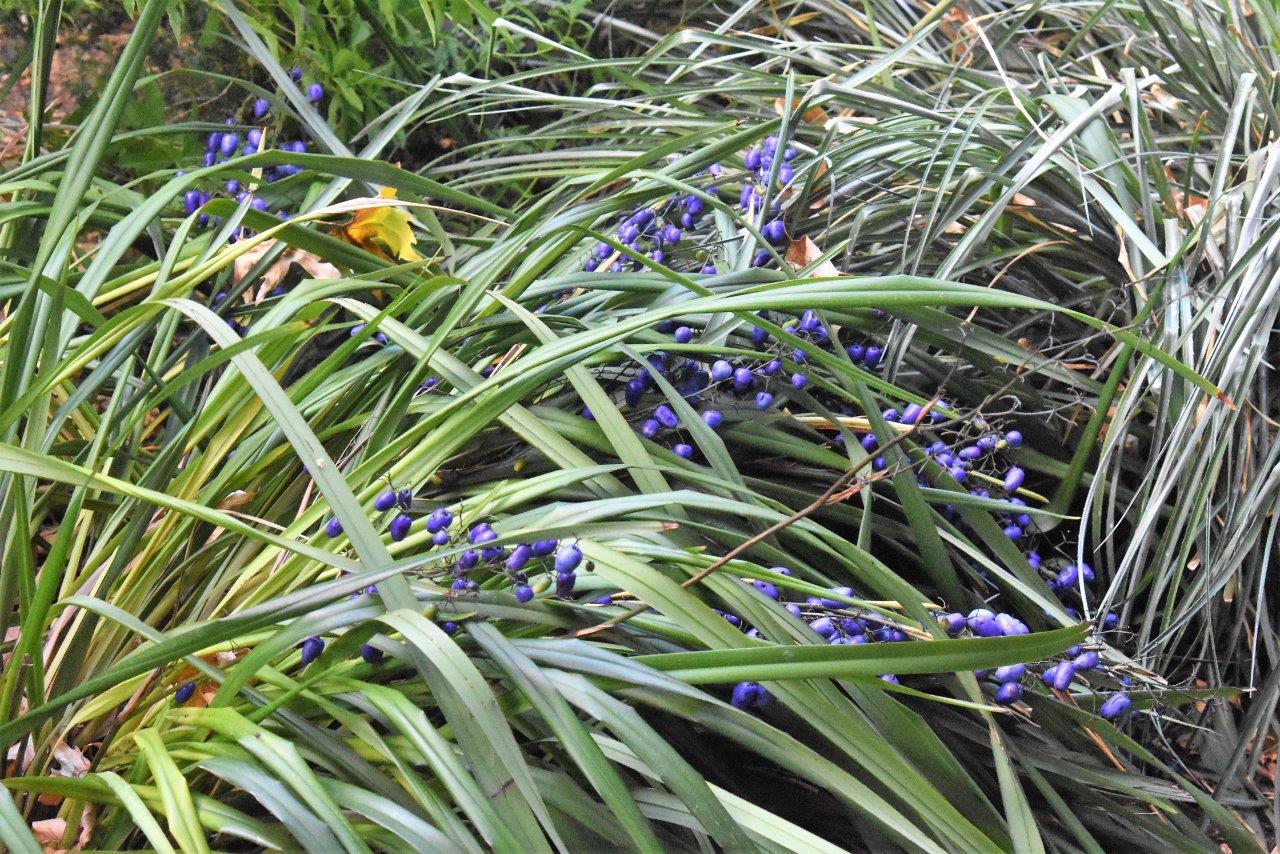
Dianella tasmanica whose berries can be used as a pesticide
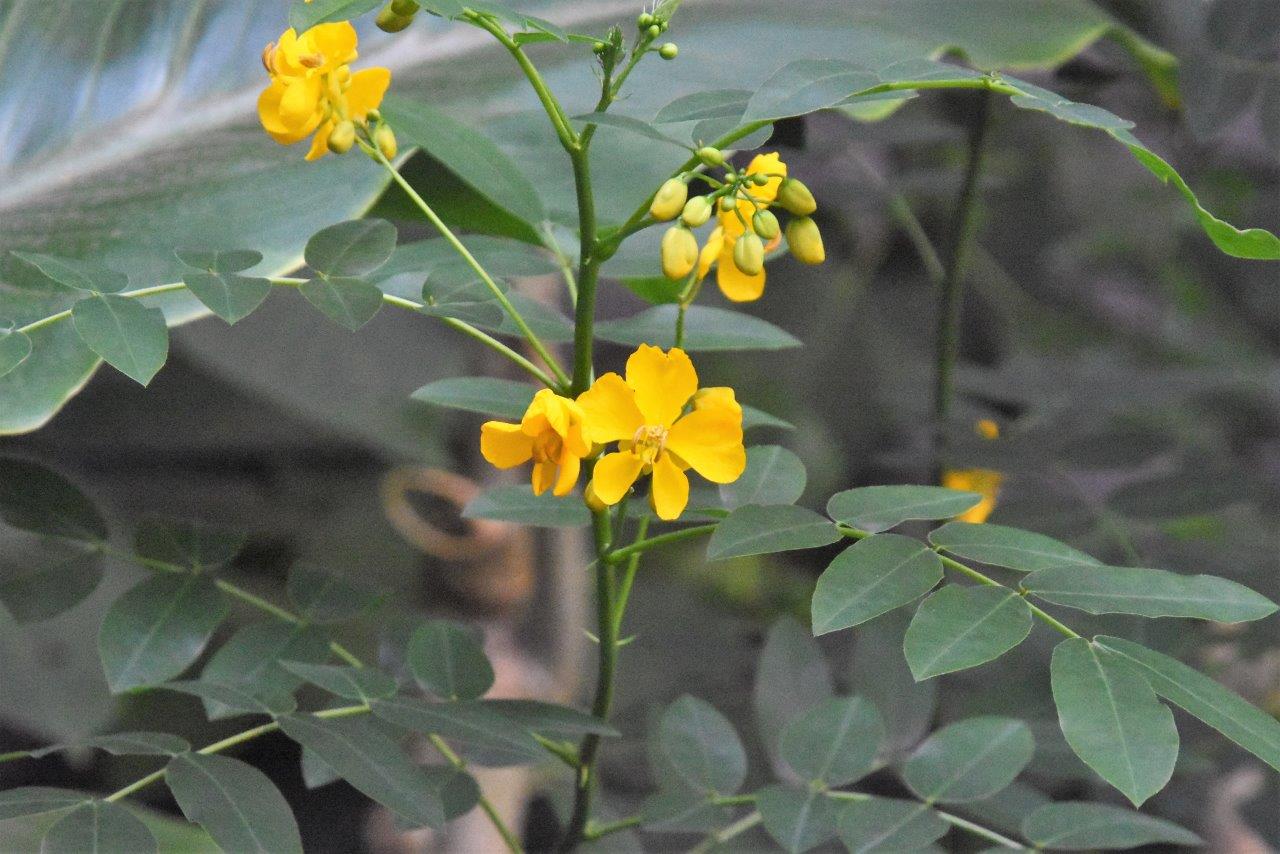
Senna – one leaf is used in each tablet to help relieve constipation. When used regularly, the nerves to the large bowel may be destroyed, leaving a permanently dilated large bowel which never functions properly again.
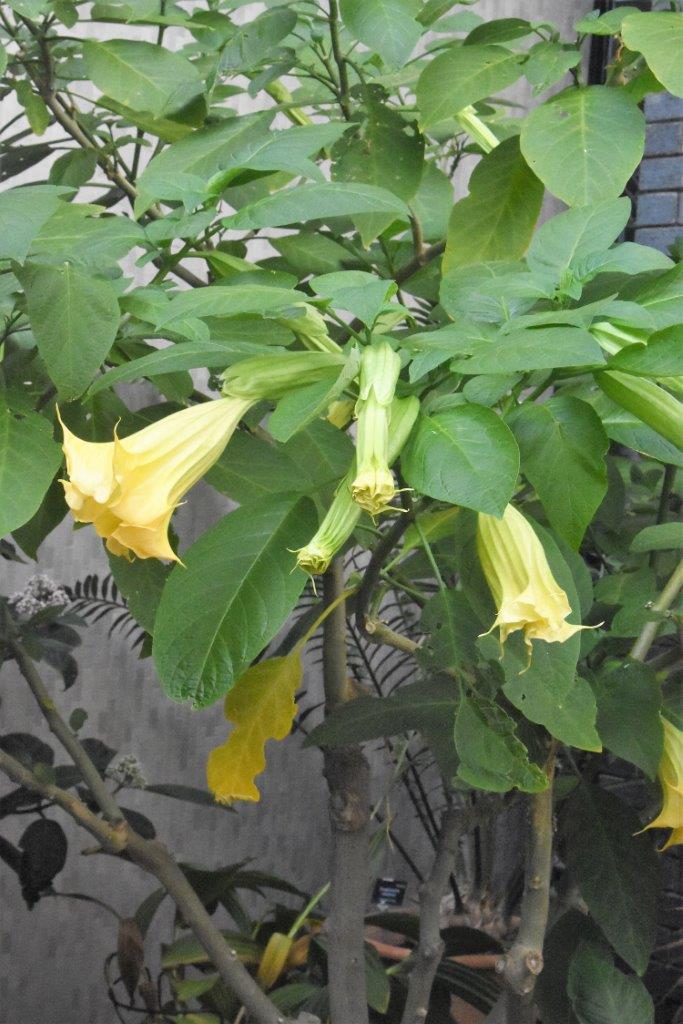
Brugmansia suaveolens contains atropine and scopolamine. It is used in opthalmology, premedication, irritable bowel syndrome and motion sickness.
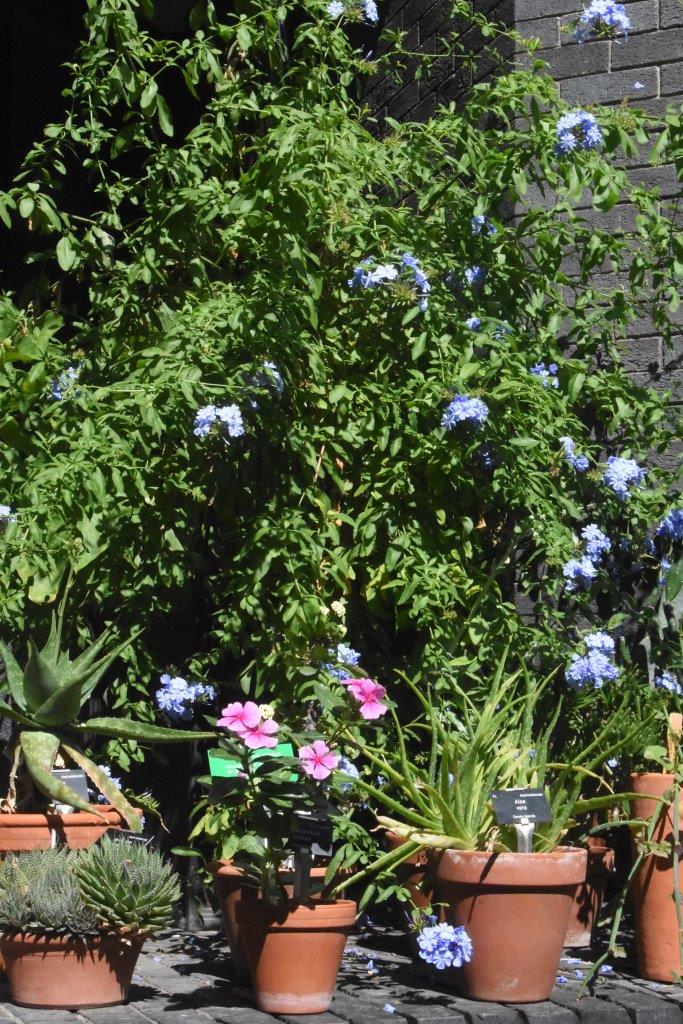
Pots in the Mediterranean area of the garden
Text and images by Lesley Jones

